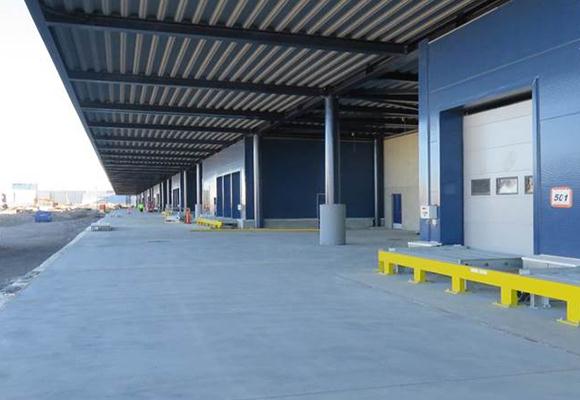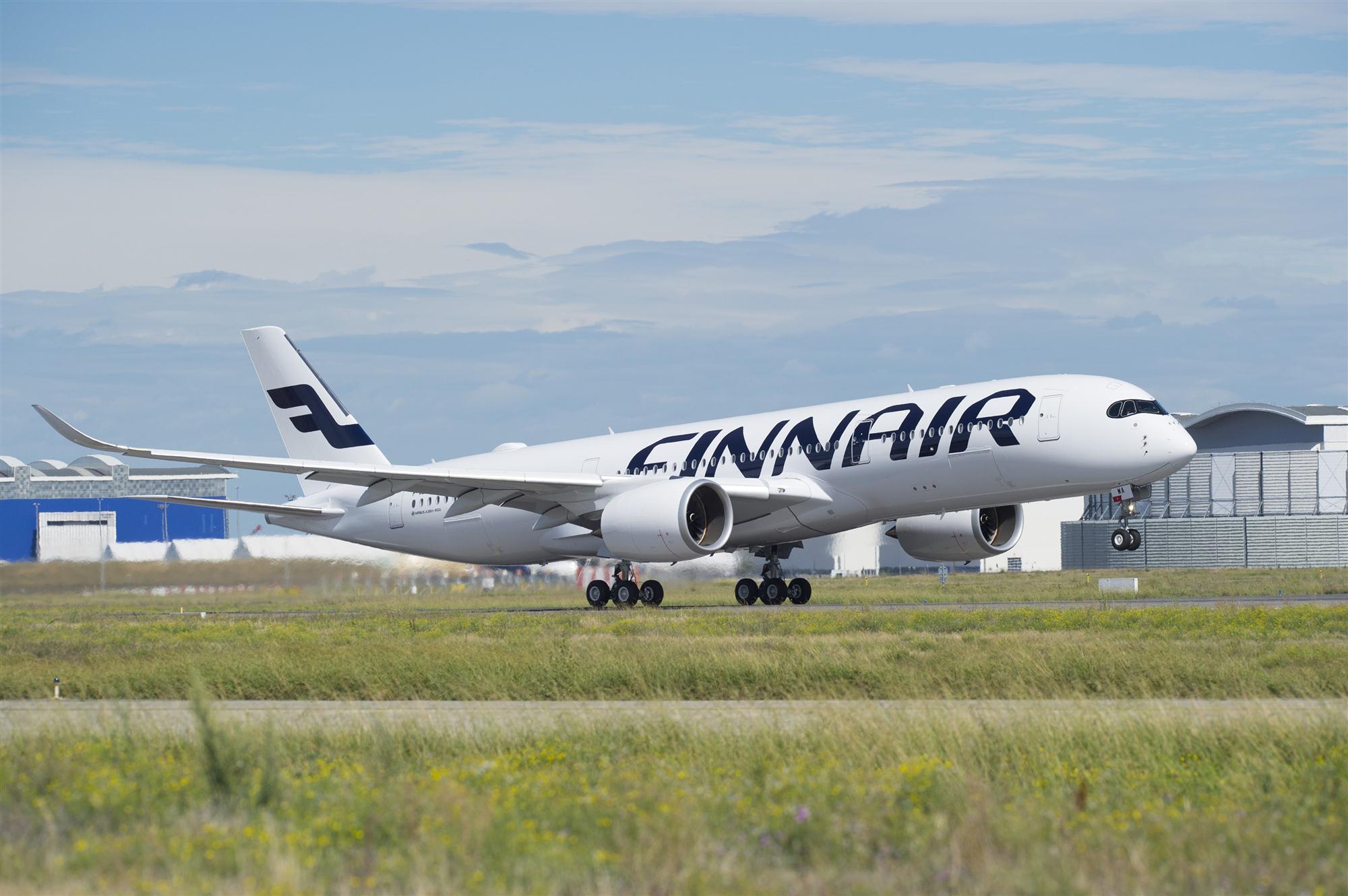![AY359 [2] AY359 [2]](/img.ashx?hash=c6e2cada29287987f7716135c4e2d511.jpg)
With Finnair’s new COOL Nordic cargo terminal now fully operational, the carrier is looking forward to the next step of its commitment to create more value for customers.
Finnair Cargo commenced partial operations at the 31,000-square-metre facility’s temperature-controlled area for perishable shipments in October 2017, leaving the general cargo area and dedicated pharmaceuticals section to begin operations in January 2018.
The launch of operations had originally been scheduled for May or June 2017, but was postponed because Finnair found that it was facing more issues than expected after it upgraded its cargo management system in December 2016, and needed additional time to perform more tests – 4,253, to be exact.
“The problem wasn’t to do with the system itself as much as with the data quality,” said Janne Tarvainen, managing director of Finnair Cargo, during an interview at the China Air Cargo Summit in Tianjin. “I think that’s the biggest bottleneck to the success of this industry. As an example, for our FWB messages in December 2016, 50% were right but with the other 50% there was something that needed to be rectified. We had a lot of data mismatches. Modern systems are such that they require good processes in place and high-quality data. Otherwise it’s just garbage in and garbage out. There’s no point.”
While the company was carrying out the thousands of tests, it decided to first try things out with seafood shipments – something that Finnair knows and understands well, given it transports an average of 50,000kg every single day.
“Another reason for the delay was our decision to train our personnel with a system that is ready and running smoothly,” Tarvainen said. “From the thousands of tests, there were findings as well. Some of them required fixes or further development, or even a complete change.”
The training process for staff wasn’t easy as it required a lot of learning but also a lot of unlearning.
“It’s all about change management, especially with the Finns,” said Tarvainen. “If you want them to do something, they want to know the reason. I think that’s fair, because it has to make sense. So it’s a new way of thinking and working. There’s a lot of potential but there’s also a lot of risk if you do not succeed.”

With the successful go-live of the new hub, Tarvainen’s next objective is for the company to achieve maturity with operations so that it can then focus on new developments.
“I’m obviously excited about the COOL terminal itself, but I’m actually more excited about what happens after that, because the terminal and the IT infrastructure that we have are just the building blocks,” he said. “Then we have the foundation for the next level and can look at things that we think will add significant value for our customers. Many of those have to do with digitalization, transparency and utilization of data.”
One example of this is Finnair Cargo Eye, a new air cargo monitoring tool the carrier launched at the annual Slush startup event in Helsinki.
Finnair Cargo Eye is an Internet of Things solution which, according to Finnair, will transform its cargo operations and value creation for customers by providing an overall panoramic view of what is happening and where everything is. It integrates multiple data sources, transactional ERP data and IoT sensors into a presentation layer with a visual layout for operational steering that will help Finnair’s new Cargo Control Center monitor and steer cargo flows more effectively in real time across the Finnair network.
In effect, Cargo Eye provides end-to-end visibility of Finnair’s cargo operations and in the future will also enable more comprehensive and transparent real-time information for customers. The tool was created with smart solutions provider Qoco Systems and is integrated with, and collects data from, SkyChain, Finnair’s cargo management system, Sensire sensors that monitor the location, temperature and humidity of shipments, and Kaltiot trackers that monitor the location of Finnair Cargo’s ground transport vehicles and the conditions of shipments during transport.
Aside from ground and IT infrastructure, Finnair has also been renewing its fleet and in 2017 added four more Airbus A350-900s. The widebody fleet now consists of eight A330-300s and 11 A350-900s.
“This is significant growth for us but we’ve been able to fill the bellies quite nicely and they’re good additions to our network,” said Tarvainen. “We’ve been able to add extra flights to Hong Kong and Narita, for example, and now we also use the A350s to destinations like Beijing, Shanghai and Singapore. Compared to the A330s, the A350s give us a bit more capacity which we’ve been able to use.”
Finnair has eight more A350-900s on order, with the last one scheduled to be delivered in 2023.

“By 2020, we’ll already have something like 45% more widebody belly capacity,” Tarvainen said. “So the A350s have really been a gamechanger for us.”
With an influx of aircraft, the airline has been taking advantage of its competitive edge. Based on Helsinki’s location on the Great Circle Route between Europe and Asia, particularly Northeast Asia, Finnair is positioning itself as the fastest connection between the two continents, and has been expanding its long-haul network to include 18 destinations in Asia. China is very much a focus, with daily Beijing, Chongqing, Hong Kong and Shanghai flights, seasonal flights to Guangzhou and Xi’an, as well as a new year-round service to Nanjing three times a week from May 2018.
According to Tarvainen, cargo used to be in a silo of its own at a legacy airline like Finnair 10 or 15 years ago, but these days it is clearly part of the main operation and therefore does influence route decisions.
“Overall, cargo accounts for approximately 8% of our total revenue, but if we only talk about widebody operations, it’s between 15-17%,” he said. “So whenever we have a discussion regarding new destinations, additional frequencies or aircraft changes, cargo has to be taken into account. At every single decision-taking move, we’re there. It’s not purely a passenger decision, because there are some places where we contribute significantly more than 15-17%.”
A good example of that is a daily A350 flight between Helsinki and Heathrow, the result of a combined decision to not only allow more passenger seats to be sold but also to have more cargo capacity to and from a severely slot-constrained airport.
With a new fleet, a new terminal and new digital platforms, Tarvainen is looking forward to the next couple of years and said that the company has a “jam-packed roadmap” ahead.
“Air cargo is typically considered quite an old-fashioned and fragmented industry, but the disruptions will be there,” he said. “Somebody will make something that will completely change things, and we want to be a part of that disruption.”
By Jeffrey Lee
Asia Cargo News | Tianjin




